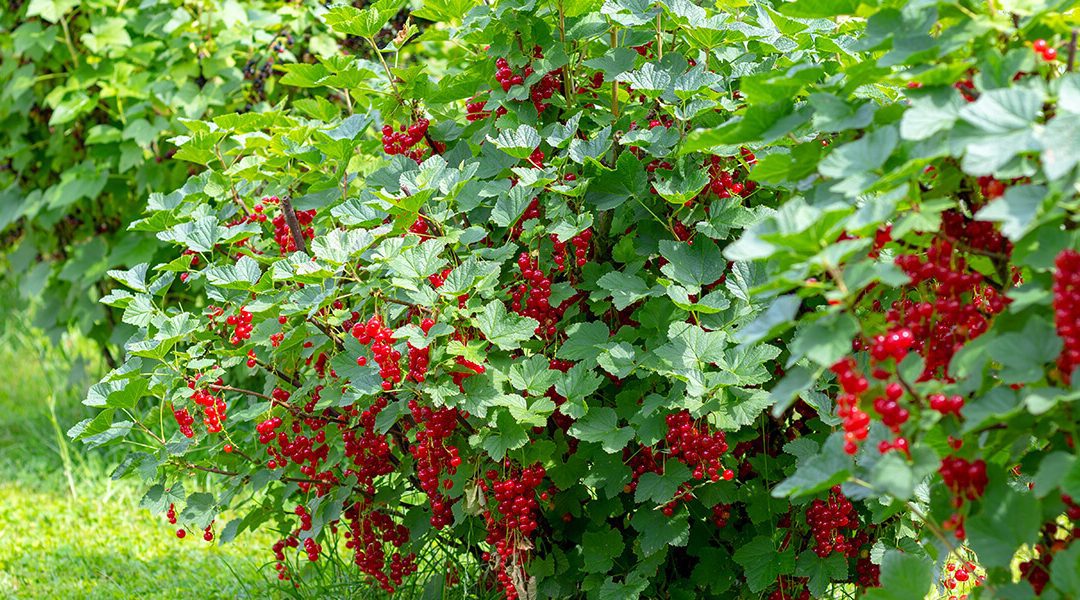Berries are some of the most nutritious and tasty foods you can grow. Plant a berry bush this spring, and you’ll have a reliable harvest for years to come; often more than you can eat! While they are among the easiest plants to grow, proper pruning and soil care go a long way to enhancing your harvest. Here’s a guide to growing blueberries, gooseberries, currants, and grapes!
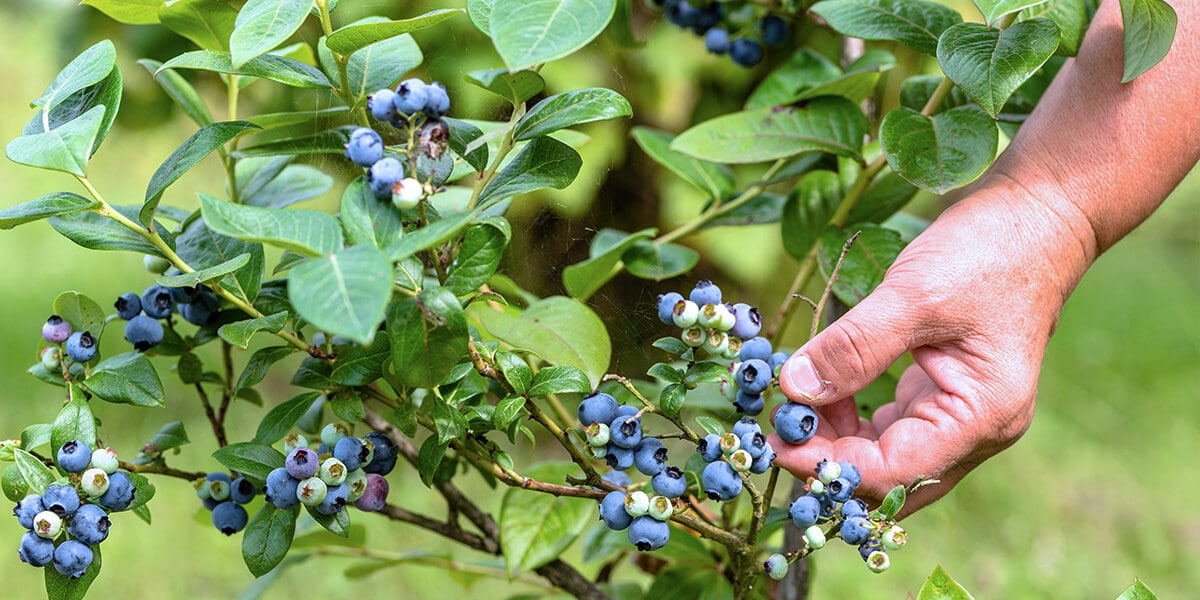
How to Grow Blueberries
These delicious berries are packed full of antioxidants and nutrients. They need acidic soil, cross-pollination, and early-spring pruning to thrive. Here are tips to give you a bountiful harvest over many years:
1. Give Blueberries Acidic Soil
Blueberries need acidic soil at a pH of 4.0-5.5. Unless you’re a soil scientist, that might seem intimidating, but there are a few simple ways to make it happen. You can till sphagnum moss into the soil in the fall or mix in elemental sulfur. Using sphagnum moss is falling out of favor due to environmental concerns with harvesting it from ecologically important peatlands, so sulphur may be your best choice. Since it needs time to take effect, you should ideally add it in the fall before planting.
You can get a soil pH tester to ensure you’ve mixed in the correct amount. If the pH is too high (i.e., not acidic enough), your blueberry may suffer from slow growth, discolored leaves, or may die altogether. Light green or red leaves or stunted growth in the summer on mature plants are other signs that the pH is no longer in the ideal range. You can help by adding organic, high-acid fertilizer such as ‘Berry-Tone.’
2. Plant At Least Two Blueberry Bushes for Cross-Pollination
Plan to plant two different varieties of blueberry bushes within 100 feet of each other for cross-pollination. For many kinds of fruit, having two plants improves crop yields, but for several varieties of blueberries, it’s necessary in order to get any fruit at all.

3. How to Prune for a Successful Harvest
Blueberry bushes are a long-term investment, but they’re well worth it. They need 2-3 years to get established and upwards of 8-10 years to reach full maturity. To give them a good start, it’s important to remove flowers in the first two years. While you’ll sacrifice a few berries upfront, the trade-off is a healthy and vigorous plant in the long run.
General pruning should be done in the early spring before the year’s growth begins. As berries grow on one-year-old wood, it’s desirable to have several strong one-year-old branches—the healthier the stem, the larger the fruit. Be careful not to over-prune as that can easily diminish your berry yield.
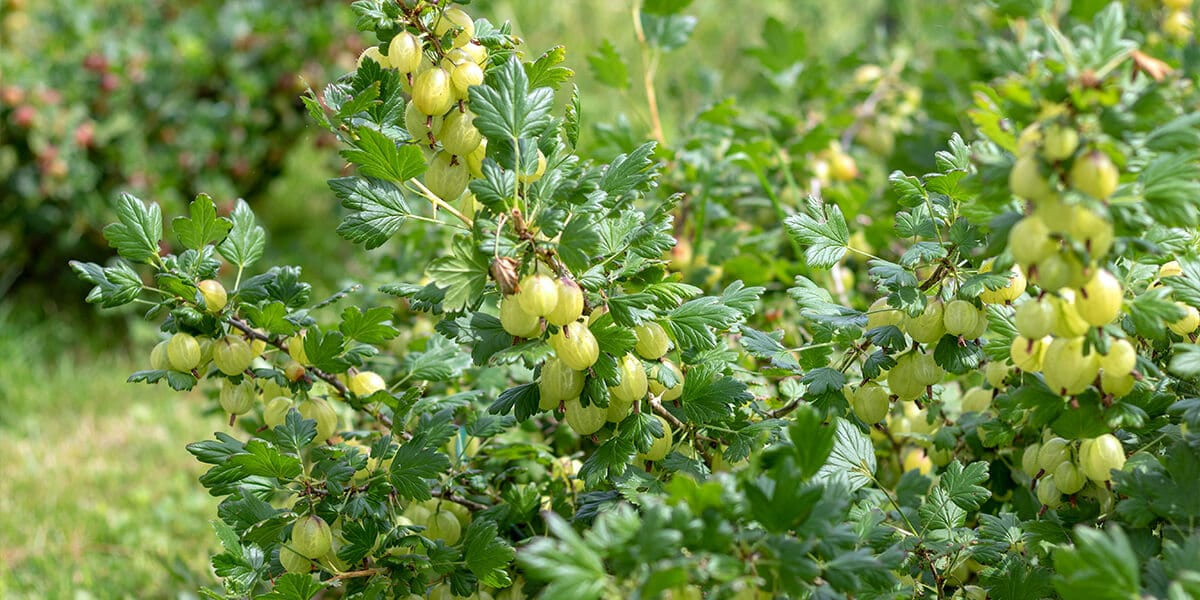
How to Grow Currants and Gooseberries
Currants and gooseberries are rugged and resilient berries that grow as far north as the arctic, but they’re also right at-home here in northern Illinois. Here are some tips and best soil and pruning practices for these highly-nutritious berries:
1. Enrich the Soil
While they tolerate relatively poor soils, gooseberries and currants do better with some added compost. Tilling in 2-3 inches of compost in the fall gives it time to enrich the soil over the winter, but if you didn’t do that, you can add it in spring as well. Composted manure can be added annually as a slow-release fertilizer. A few shovels per plant provide excellent nourishment for the growing season.
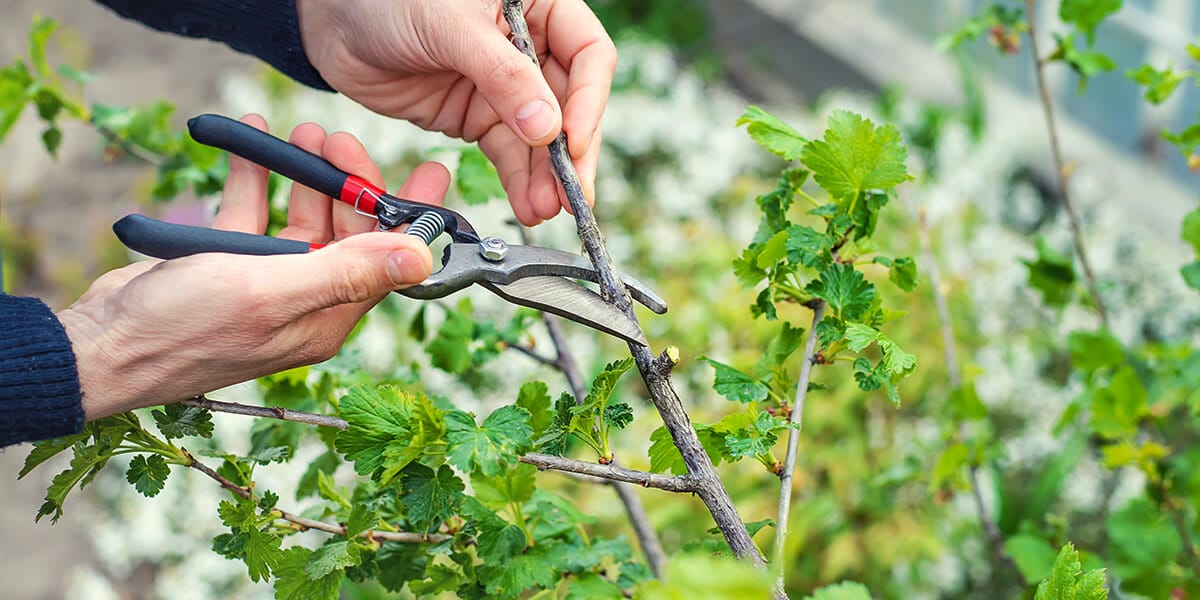
2. How to Prune Gooseberries and Currants
Prune annually in early March before new growth appears. The best berries in quality and flavor grow on 2-to-3-year-old canes. For the first three years, let five new canes grow each year. From the fourth year on, prune the oldest wood at the base of the plant. A mature bush should have about 9-12 canes after pruning. Over time, aim to shape the plant into a goblet formation so that all the ripening berries can access sunlight. Prune any canes that are arching towards the ground, as they can form roots if they touch the soil.
Pruning is essential to maximize your berry-producing canes and to give fruit access to sunlight.
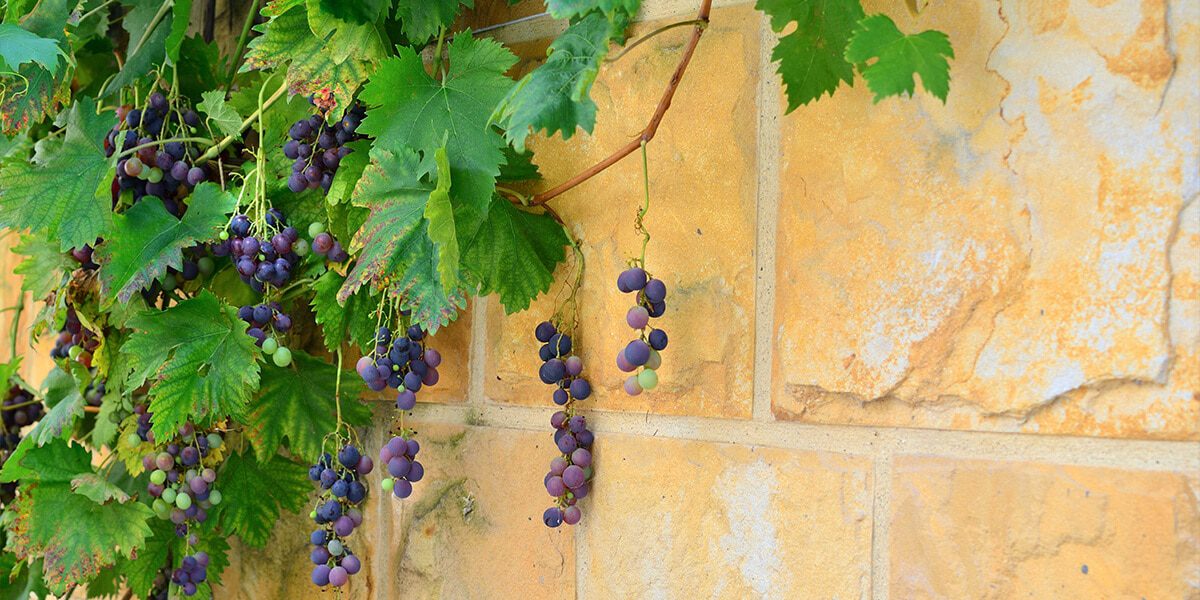
How to Grow Grapes
Grapes grow best in full sun and loose soil. Choosing the right grape variety and pruning in the early spring are keys to a successful harvest:
1. Choose the Right Grape for Your Purpose
Do you fancy grapes for juicing and jellies, fresh eating, or winemaking? Not all grapes excel at all three. Some have thick skins and not enough pulp, while others are too high in sugar, and so on. Most of the grapes we sell are seedless varieties, such as the Himrod and Concord, that are best for fresh eating right from the garden.
2. How to Prune Grapes
Growing habits differ among grape varieties, but most vines can be pruned in the same way. First of all, identify the strongest cane and train it to grow straight up the trellis. Once the vine reaches the top, or the height you desire, prune a few inches off the top of the cane to encourage horizontal growth. Train a branch in each horizontal direction, tying them to the support. Be sure to remove any suckers around the base of the plant or any shoots lower on the trunk.
Once your horizontal branches have formed, you’ll want to prune the vine each spring before growth begins. How so? Choose 2-4 of the strongest canes for arms. Leave about 10 buds along the length of each arm and leave the tip of each arm. Remove all other buds and tie the arms to your growing support. Fruit grows on one-year-old growth. Heavy pruning results in the best fruiting, while light pruning usually leads to a lot of small, poor quality grapes.
All berries and small fruit benefit from added compost or organic matter in their soil. They ripen best in the sunlight and grow well in loose soil. Pruning is essential to maximize your berry-producing canes and to give fruit access to sunlight. If you want to add berries to your yard this year, early spring is an ideal time for planting!
Additional Information:
Top Ten Garden Vegetables and Fruits for Beginners
MASTER GROWING YOUR OWN FOOD
Platt Hill Nursery is Chicago’s premier garden center and nursery.

